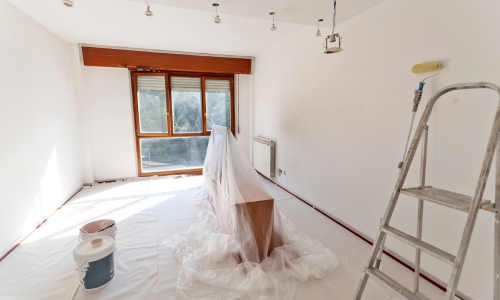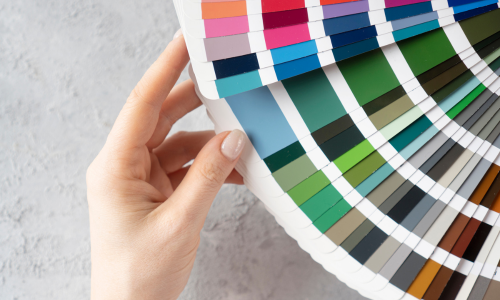An outdated brick fireplace can make a beautiful room look stuck in time. With this guide you can change your dark, dated fireplace into a stunning focal point. The solution lies in a simple technique that works: whitewashing.
Whitewashing brick provides a cost-effective way to renovate fireplaces. This time-tested method lets homeowners brighten and modernize their fireplaces while keeping the brick's natural texture and character intact. Whitewashing creates a soft, weathered appearance that adds charm and sophistication to spaces, unlike solid paint.
This guide will help you learn everything from original preparation to finishing touches that ensure professional results. The techniques you need to refresh your fireplace will work for both subtle changes and dramatic makeovers.
Planning Your Fireplace Transformation
You need a solid plan to whitewash your brick fireplace. Proper planning is crucial in all your home makeover projects.
Assessing your current fireplace condition
Let's review your fireplace's current state. A complete inspection of your brick surface will give us the full picture. Here's what you should watch for:
- Loose or crumbling mortar joints
- Cracks or structural issues in the brick
- Previous paint or sealant applications
- Signs of water damage or efflorescence
- Soot and deep-set stains
Setting realistic expectations
Let's recap what whitewashing can and can't do. This technique will transform your fireplace beautifully, but it's a semi-permanent solution. Your brick's natural texture shows through and creates a weathered, rustic look that's nowhere near as opaque as paint. The paint-to-water ratio changes the coverage level, but whitewashing isn't meant to be fully opaque.
Whitewashing works best to brighten rooms while keeping their architectural character. Think about how your fireplace will match your wooden mantels, surrounding walls, and color scheme. The testing process helps us adjust the whitewash intensity to match your vision.
Pre-Whitewashing Preparation
Your brick fireplace whitewashing project's success depends on good preparation. Time spent on prep work saves countless headaches down the road.
Deep cleaning and repair requirements
A spotlessly clean surface is essential before whitewashing your brick fireplace.
- Start with a vacuum to remove loose debris and dust
- Saturate bricks with plain water using a spray bottle
- Clean with dish soap solution for light dirt
- Use TSP (trisodium phosphate) for stubborn stains
- Rinse with clean water
- Let the surface dry completely
Fix any damaged mortar or loose bricks before you begin. The repairs need time to cure fully before whitewashing starts.
Protecting surrounding areas
Protection is a vital part of the process - I learned this the hard way. You'll need:
- Painter's tape for edges and trim
- Drop cloths for flooring
- Masking paper for the firebox
- Plastic sheeting for nearby furniture
Don't skimp on protective materials. The extra coverage beats cleaning paint splatters later.
Testing and sampling techniques
A test mixture with equal parts paint and water works best. The consistency should be similar to milk - thin enough to penetrate the brick but thick enough to provide coverage. Try your mixture on a hidden spot or a spare brick if you have one.
Start with one thin coat during testing. The surface needs to dry completely before you decide about additional layers. This method helps balance brick texture and coverage. Note that adding more whitewash is easy, but removal becomes nowhere near as simple.
Mastering the Application Process
Let me share the most exciting part - giving your fireplace a fresh new look! After whitewashing countless brick fireplaces, I'm thrilled to share my professional secrets that will help you achieve that perfect finish.
Professional application secrets
A beautiful whitewash starts with the right mixture. My experience shows two approaches work best: a 50/50 paint-to-water ratio gives more coverage, while a 1:3 ratio creates a lighter, more translucent finish. Here's my proven application process:
- Start with the mortar lines using a small brush
- Work in manageable 3-foot sections
- Apply whitewash with a large brush
- Dab immediately with a clean rag
- Check for drips and blend as you go
Pro tip: Keep a spray bottle of water nearby. A light mist and gentle dabbing will help balance any areas that look too opaque.
Maintaining consistency across surfaces
The right finish needs consistency. Working with a partner will give a professional look - one person applies the whitewash while the other dabs and blends. This teamwork prevents visible stopping points and creates even coverage.
Solo projects need a methodical approach. Move from top to bottom with steady brush strokes and consistent dabbing pressure. Step back between sections to view your work from different angles.
Blending and layering techniques
Layering creates the magic in whitewashing. The first coat should be thinner, letting the brick's character show through. Once dry, you can add more layers where needed.
Note that whitewashing's beauty comes from its imperfections. Those subtle variations in coverage add depth and interest that solid paint cannot match. Some bricks might absorb more whitewash than others - this natural variation adds authentic charm to the finish.
Dark bricks might need extra pressure at the time of dabbing to help the whitewash penetrate deeper. Take your time to perfect each section as you go.
Finishing Touches and Maintenance
Your whitewashed brick fireplace transformation is almost complete. The beauty of your work needs protection and maintenance to last. Here are my tested strategies that will keep your fireplace looking fresh for years.
Sealing and protecting your work
A low-sheen masonry sealer provides excellent protection against flaking and makes cleaning easier, though sealing isn't mandatory. My technique involves using a brush to apply thin, even coats. Quick work prevents streaks, and the process doesn't take long. The results make the extra effort worthwhile. Important: Your sealer choice should be specific to masonry. This ensures proper adhesion and protection.
Regular cleaning and touch-up tips
Keep these cleaning essentials ready:
- Soft-bristled brush
- Mild dish soap solution
- White vinegar mixture
- Clean microfiber cloths
- Spray bottle with plain water
Start with gentle dusting using a soft brush for routine cleaning. A mixture of warm water and mild dish soap works best for deeper cleaning needs. Harsh chemicals could damage the whitewash, so avoid them. Pro tip: Test cleaning solutions on a small, hidden area first.
Routine maintenance requirements
My simple maintenance schedule keeps whitewashed fireplaces in top condition:
Monthly: Dust surfaces and inspect for wear signs Quarterly: Deep clean with gentle solutions Annually: Check for loose mortar or brick damage Every 2-3 years: Reseal if needed
Don't worry if areas become too transparent or show wear. Touch-ups are straightforward – just keep some original whitewash mixture stored for quick fixes. Note that whitewash's natural aging adds character, and slight variations enhance its charm.
A good-quality screen protects your whitewashed surface from excessive soot and heat exposure in working fireplaces. This simple addition substantially reduces maintenance needs and extends your whitewash finish's life.
Conclusion
Whitewashing your brick fireplace might seem daunting, but this simple technique has changed countless dated fireplaces into stunning focal points. However, success depends on careful preparation, patient application, and proper maintenance.
Brick surfaces tell their own stories through subtle variations in texture and absorption. These natural characteristics create unique, weathered charm that makes whitewashed fireplaces appealing. The process demands attention to detail, yet your efforts will yield a timeless, sophisticated look that brightens spaces while preserving their architectural character.
Your whitewashed fireplace's beauty will last for years with proper maintenance. Your refreshed fireplace is sure to become one of your favorite design elements. These updated features add both value and style to your home.
FAQs
How can I update an old brick fireplace to look modern?
To modernize an outdated brick fireplace, consider painting it in a neutral or bold color. Techniques like a German schmear or a concrete skim coat can also refresh its appearance. Enhancing the fireplace with a modern or antique mantel surround, or a reclaimed floating wood mantel, can add further dimension and style. Whitewashing is a quick, easy solution to update an old looking fireplace.
Is whitewashing a brick fireplace a recommended approach?
Whitewashing is beneficial as it maintains the natural texture of the brick and adheres strongly to masonry or coarse wood surfaces. Although some opt for diluted paint to achieve a similar appearance, it does not replicate the exact effect of traditional whitewash.
What type of paint should be used for whitewashing a brick fireplace?
For a whitewashing project, it's best to use latex (water-based) paint. Prepare the whitewash by mixing equal parts of paint and water. This ratio is ideal as bricks are porous and absorb moisture, helping them retain the color effectively.
How do I achieve a whitewashed look on brick?
To create a whitewashed effect, mix a solution of half water and half white latex paint until it's well blended. Test the mixture on a small area of the brick to see the effect. If you desire more coverage, increase the paint ratio in your mixture. Keep in mind that the brick's porosity may cause the whitewash to fade slightly as it absorbs into the surface.



